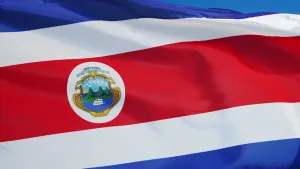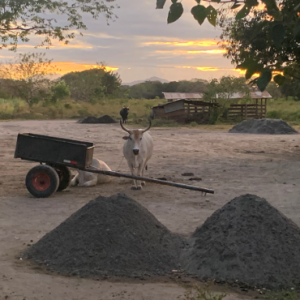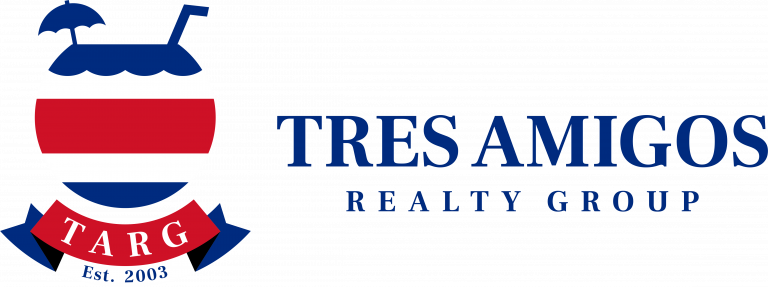September 15th, Independence day in Costa Rica
 That's right, Independence Day. Wind nor rain, nor sun, nor pandemic can change the fact, Costa Rica remains a sovereign country. September 15 in 1821 marks the day Costa Rica, along with the rest of Central America broke away from Spain becoming part of the First Mexican Empire. At that time Costa Rica and Nicaragua already operated as an autonomous region. After a short civil war mainly attributed to the Battle of Ochomogo (next to Cartago) in 1823, the Republicans had defeated the Imperialists to proceed with Costa Rica's further independence from The First Mexican Empire. All was in vain as word arrived shortly after, that the First Mexican Empire ceased to exist, leaving Costa Rica in union as part of the Federal Republic of Central America. In 1825 Juan Mora Fernández was elected the first Costa Rican head of state. Four towns in Central Valley, Heredia, Cartago, Alajuela, and San Jose argued over the Capital until 1837 when San Jose was officially declared. Having operated as an independent state for many years, Costa Rica formally withdrew from Guatemala City's central government and the Federal Republic of Central America.
That's right, Independence Day. Wind nor rain, nor sun, nor pandemic can change the fact, Costa Rica remains a sovereign country. September 15 in 1821 marks the day Costa Rica, along with the rest of Central America broke away from Spain becoming part of the First Mexican Empire. At that time Costa Rica and Nicaragua already operated as an autonomous region. After a short civil war mainly attributed to the Battle of Ochomogo (next to Cartago) in 1823, the Republicans had defeated the Imperialists to proceed with Costa Rica's further independence from The First Mexican Empire. All was in vain as word arrived shortly after, that the First Mexican Empire ceased to exist, leaving Costa Rica in union as part of the Federal Republic of Central America. In 1825 Juan Mora Fernández was elected the first Costa Rican head of state. Four towns in Central Valley, Heredia, Cartago, Alajuela, and San Jose argued over the Capital until 1837 when San Jose was officially declared. Having operated as an independent state for many years, Costa Rica formally withdrew from Guatemala City's central government and the Federal Republic of Central America.
Some interesting highlights about Costa Rica as a Sovereign State
Costa Rica built its initial wealth on coffee exports starting 200 years ago. This ushered in the Coffee Baron Era. That is another story. (I personally spent much time in a building which once housed a Coffee Baron family. It is interesting to witness the difference in construction which housed these rich families).
Prior to coffee, Cocoa, tobacco, and sugar were the primary exports with bananas arriving approximately 100 years later.
I believe the biggest portion of inhabitants in the central plateau around the time of independence were of Spanish origin with other Europeans. Later this was followed by USA Americans, Some Chinese and Jamaicans on the Atlantic coast.
The ox cart was the main mode of commercial transportation, with a few ox carts remaining in use today. This is a recent photo about 20 miles from where I am sitting. Still in use to move sand and gravel around some back lanes.
 During Costa Rica's history, there have been different leaders including military dictator presidents. But the most significant event since independence was the military being abolished. As a personal note. No one can predict the future. But as we look to some of our neighboring countries, we are seeing the military being used against its citizens. The foresight to prevent that from becoming a possibility here in Costa Rica is noted.
During Costa Rica's history, there have been different leaders including military dictator presidents. But the most significant event since independence was the military being abolished. As a personal note. No one can predict the future. But as we look to some of our neighboring countries, we are seeing the military being used against its citizens. The foresight to prevent that from becoming a possibility here in Costa Rica is noted.
In 1849 the province of Chiriquí joined Panama. This was a sore spot for Costa Rica. In that area, French competed as the primary language and is still used as a second language today.
1825 was the year Guanacaste decided to join, and was annexed by Costa Rica. This event sometimes gets confused with Independence Day. At the time of joining Guanacaste was known as Nicoya. But that is a whole different story

Independence day is regularly celebrated with every variety of Dance and parade. Ticos can dance like the wind and do get dressed up for the occasion.
More facts;
It does not snow in Costa Rica and we are below Hurricane Alley. We get tropical storms. But the last hurricane to hit Costa Rica soil was over 150 years ago. Costa Rica is home to the only place in the world you can see both the Atlantic and Pacific Oceans from one spot. Costa Rica has set aside 25% of its land as protected zones. That's no small feat. We house an estimated 5% of the world's bio-diversity.
Life Costa Rica style, or as we say Pura Vida!
Contact Theo Veenstra, and LetsBuyCostaRica.com, to be a part of Costa Rica and Paradise. Don't miss another Independence day here in Costa Rica











